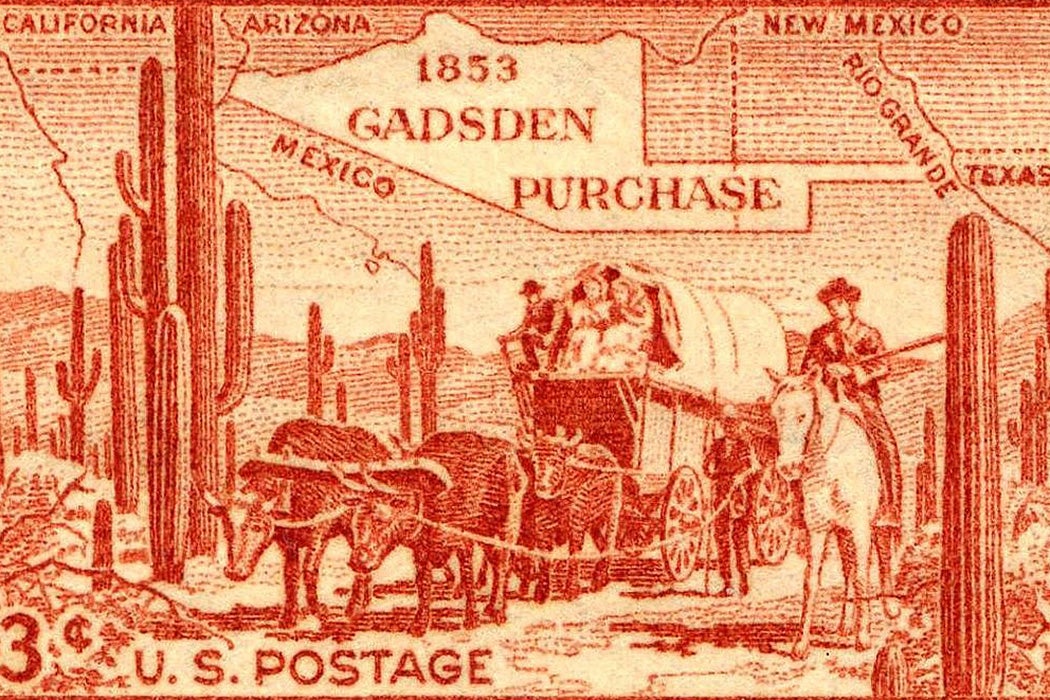Looking back at the years before the Civil War, one might be inclined to regard chattel slavery as a backward system, confined to a single region and doomed to destruction one way or another. But, as historian Kevin Waite writes, at the time, pro-slavery forces—particularly the future president of the Confederate States of America, Jefferson Davis—were positioning enslavement as the key to the future of a continent-spanning nation.
Soon after the end of the Mexican-American War in 1848, Waite writes, then-Senator Davis began talking up the westward expansion of slavery. He argued that enslaved people could farm the lower Colorado River area and perhaps mine gold that might be found around the Gila River.
For Davis, a key to expanding the power of the enslaver class was enhancing the economic and political ties between the South and West. One form this took was a push to have the first transcontinental railway run along a southern route, opening up a robust commerce channel from South Carolina to Southern California. As President Franklin Pierce’s secretary of war, Davis worked with pro-slavery campaigner James Gadsden to secure land for this project. This ended with the Gadsden Purchase, adding a strip of land along what’s now the border of New Mexico and Arizona to the country’s territory.
“By 1854, a commercial empire stretching to the Pacific seemed close at hand for slavery’s cotton economy,” Waite writes.
Northern forces were only able to stave off this outcome by passing the Kansas-Nebraska Act, which opened areas previously set aside for Native nations to white settlement, paving the way for a northern railroad route. The ensuing national political fights, centered on pro- and anti-slavery violence in Bleeding Kansas, put plans for a Pacific railroad along any route on hold.
But Davis had other ideas for creating a southern corridor across the continent. One was a weird chapter in which he convinced Congress to bring dozens of camels from the Middle East to help fight the tribes of the Southwest and defend white settlers. Another was the more successful creation of a southern overland mail route from St. Louis to Los Angeles, which resulted in better roads and more secure routes for white settlers.
Weekly Newsletter
As Davis wrote in a letter to a friend, he expected that slaveholders bringing enslaved laborers westward along a southern route would demonstrate the “advantage” of the slave system to white westerners.
And, in fact, Waite writes, western states and territories, including California and New Mexico, did often ally with southern leaders on national issues in the run-up to the Civil War. Once the war began, the Confederacy was briefly able to claim the part of the territory now known as Arizona, with the support of many of its citizens. Confederate forces also attempted to foment a revolution in California to swing the state to its side.
Like the Confederate cause in general, these efforts ultimately failed. But they reflected a very real potential for an extension of pro-slavery power across the growing country.







